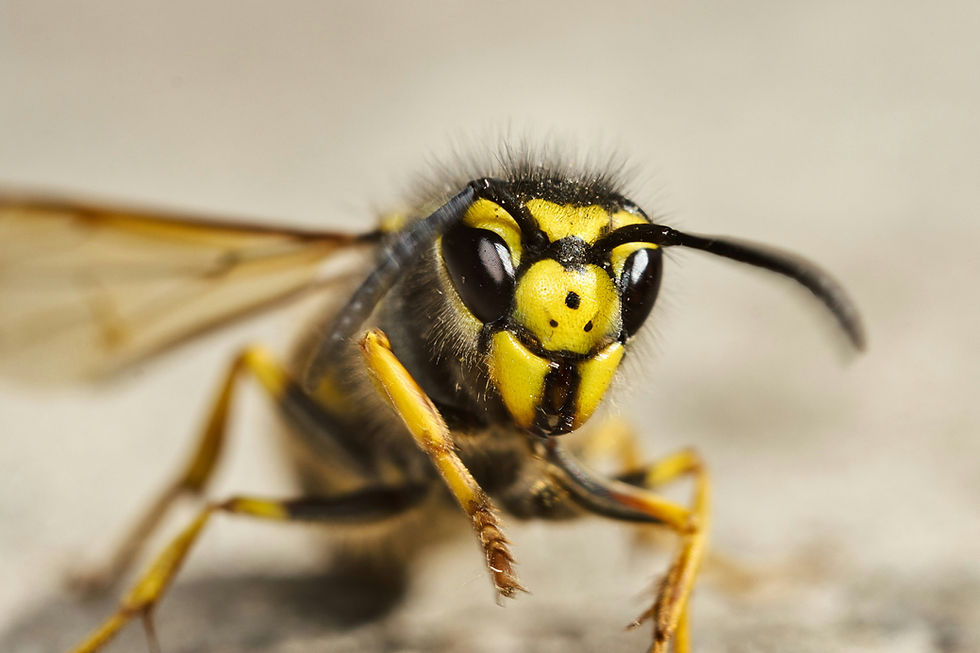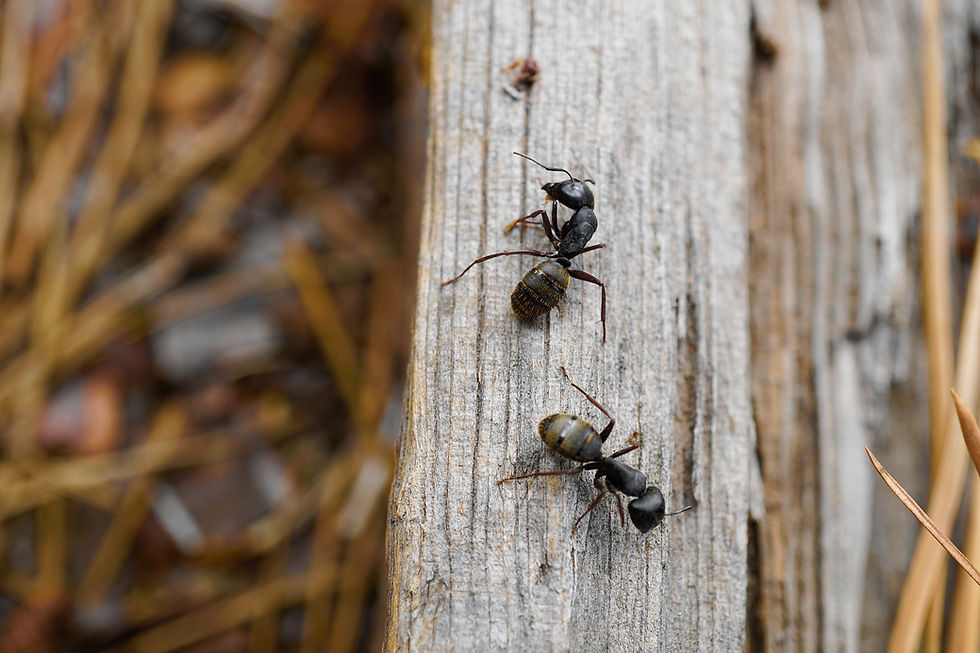The Buzz About Yellowjackets: Everything You Need to Know About These Feisty Flyers
- VecPest

- Dec 31, 2024
- 4 min read
The Buzz About Yellowjackets: Everything You Need to Know About These Feisty Flyers
Ever had a backyard barbecue hijacked by uninvited guests with stripes and stingers? Yellowjackets are the ultimate party crashers, and while their vibrant yellow-and-black uniforms might look dazzling, these wasps pack a punch—and a sting! But don’t fret. By the end of this blog, you’ll know exactly how to handle them.
Yellowjackets are like nature's double-edged sword: they can be both helpful and harmful. They’re benef

icial pollinators and scavengers but can also turn aggressive in seconds. In this post, we’ll dive into their fascinating world, decode their behavior, and arm you with tips to stay safe and pest-free.
1. Meet the Yellowjacket: Not Your Average Bee
Hook: Not every striped insect buzzing around is a bee—yellowjackets often get a bad rap for crimes they didn’t commit.
Yellowjackets are wasps, not bees, and they’re far more aggressive. Unlike bees, which have fuzzy bodies and are all about spreading pollen, yellowjackets are smooth, sleek, and built for speed. They thrive on sweet treats and proteins, making your picnic table their personal buffet.
🧐 Fun Fact: Yellowjackets can sting multiple times, unlike bees that lose their stinger after one attack.
Practical Tip: To avoid attracting yellowjackets, keep food and sugary drinks covered when eating outdoors.
2. Why Are They So Aggressive?
Hook: Ever wondered why yellowjackets seem to have a short fuse? It’s not personal—it’s science.
Yellowjackets become more aggressive in late summer and early fall as their colonies prepare for winter. This is when they’re on the hunt for high-energy food sources to fuel their queen. Their territorial instincts also spike, making them more likely to sting if they feel threatened.
📊 Did You Know? According to the National Pest Management Association, yellowjackets are responsible for nearly half of all insect stings in the U.S.
Practical Tip: Avoid swatting at yellowjackets; sudden movements can provoke them. Instead, move away calmly and slowly.
3. The Life of a Yellowjacket: From Egg to Stinger
Hook: What’s the secret to their relentless energy? It all starts with the queen.
Yellowjackets live in colonies led by a single queen. In the spring, she emerges from hibernation to lay eggs, which hatch into workers. These workers build the nest, gather food, and defend the colony. By summer, the population can explode to thousands.
🌿 Expert Insight: "Understanding yellowjacket colonies is key to controlling them," says Dr. Michael Bentley, an entomologist with the National Pest Management Association.
Practical Tip: Spotting a nest early can save you trouble. Call a pest control professional if you find one near your home.
4. Yellowjacket Nests: Where Are They Hiding?
Hook: Yellowjackets are sneaky architects—finding their nests can be like solving a mystery.
Yellowjackets often build nests underground, in hollow trees, or under the eaves of buildings. Their nests can be as small as a baseball or grow to the size of a basketball, depending on the colony size.
🔎 Stat Alert: An underground yellowjacket nest can house up to 4,000 workers!
Practical Tip: Watch for increased yellowjacket activity in specific areas, as this can indicate the location of a nest.
5. How to Keep Yellowjackets at Bay
Hook: Tired of playing defense? It’s time to go on offense with these preventative strategies.
Keeping yellowjackets away starts with minimizing their access to food and nesting sites. Seal trash cans tightly, clean up spills immediately, and check for small openings around your home where they could build nests.
Pro Tip: A simple homemade trap—like a bottle filled with sugar water—can lure and trap them away from your space.
6. What to Do if You’re Stung
Hook: Ouch! A yellowjacket sting can be painful, but knowing how to treat it can make all the difference.
If you’re stung, wash the area with soap and water, apply ice to reduce swelling, and take an antihistamine for itching. For severe allergic reactions, seek medical attention immediately.
📢 Quote: "Prompt treatment is essential to reduce pain and swelling from insect stings," says Dr. Jennifer Carey, an allergist.
Practical Tip: Always carry an epinephrine injector if you have a known allergy to insect stings.
7. The Silver Lining: Yellowjackets as Ecosystem Warriors
Hook: They may be pesky, but yellowjackets are more than just a nuisance.
Yellowjackets are important predators of pests like flies and caterpillars. They also help pollinate plants while foraging for nectar. Though they can be aggressive, their role in the ecosystem shouldn’t be overlooked.
Practical Tip: If yellowjackets aren’t posing a direct threat, consider letting them be—they’re doing nature’s dirty work for free.
Wrapping Up: Staying One Step Ahead of Yellowjackets
Yellowjackets are undeniably fascinating, but their aggressive nature can make them a formidable foe. By understanding their behavior, identifying nests early, and taking preventative measures, you can coexist peacefully—or safely remove them if needed.
So next time you spot one buzzing around your picnic, remember: knowledge is your best defense. Stay calm, stay safe, and keep your outdoor spaces sting-free!





Comments